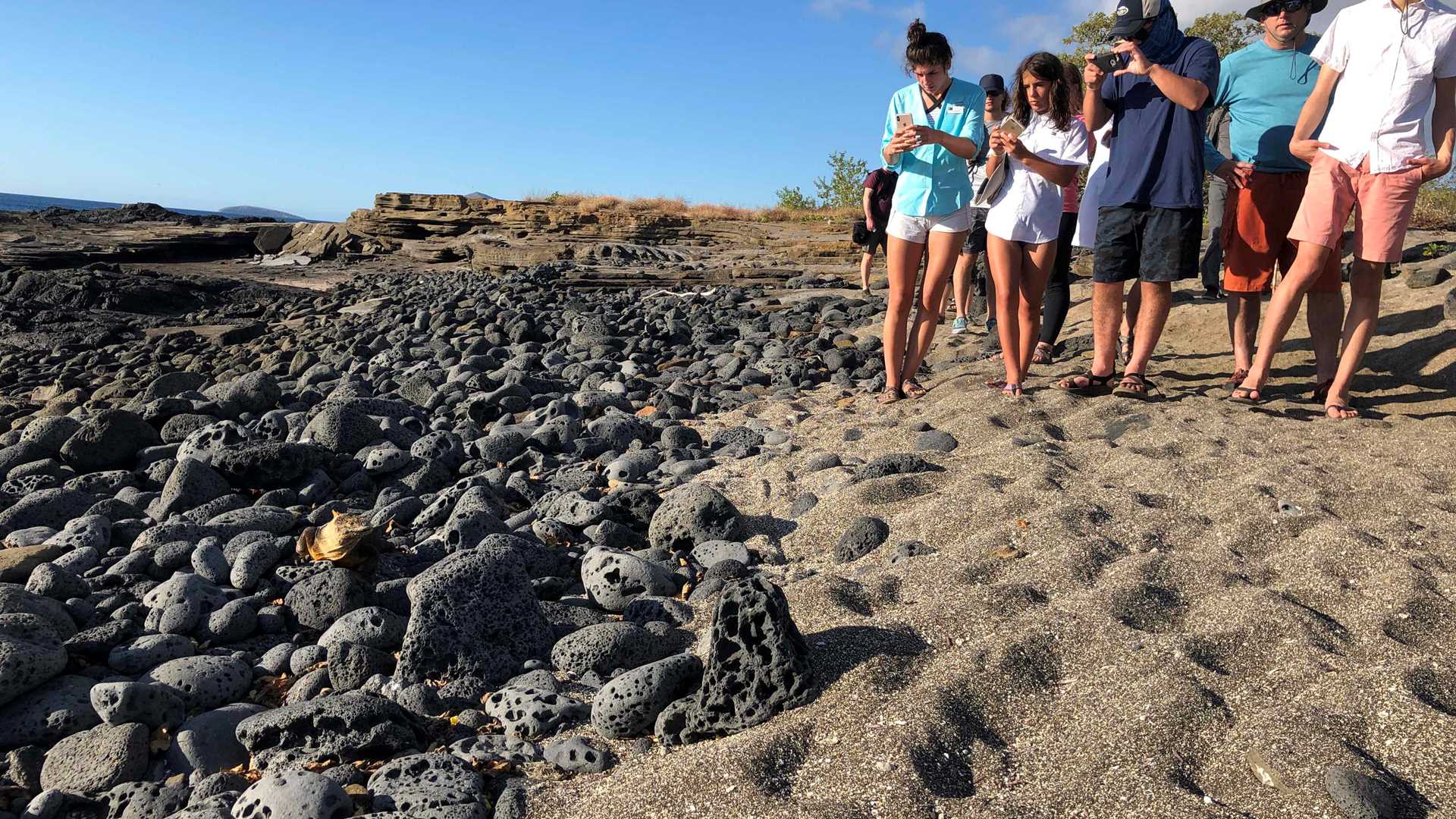Guests onboard National Geographic Endeavour II spent the day exploring Santiago Island. Centrally located in the archipelago, Santiago is one of the largest islands in Galapagos. We began the day with an early morning walk at Punta Espumilla beach, where guests had a fantastic opportunity to catch the morning light and learn helpful tips on how to improve their photos from our photography instructor. This beach is an important sea turtle nesting site and home to a variety of shore birds.
After breakfast, guests went on various excursions, including kayaking, paddleboarding, glass-bottom boating, and snorkeling at Bucaneers’ Cove. The marine environment of this site was particularly spectacular today; the visibility was high and there was a diversity of tropical fish to observe. We encountered several species of parrotfish, schooling burrito grunts, and golden cownose rays. Guests swam into a dark cave and enjoyed a beautiful silhouette perspective of a Pacific creole fish school. A special Ecuadorian lunch we served, where guests learned about local cuisine.
In the afternoon, we disembarked at Puerto Egas. Guests had the opportunity to snorkel at the beach where they sighted sea lions and sea turtles. After our time at the beach, we went on a lovely sunset walk along the coastline to observe Galapagos fur seals, grottos, and a variety of shorebirds. But perhaps the most interesting sighting of the afternoon were the newly repatriated land iguanas. Only two months ago, the Galapagos National Park released 1,500 Galapagos land iguanas to Santiago which were previously extinct from this island for decades as a result of human influence. Guests learned about the history of voyagers that frequented Galapagos for centuries, leaving behind devastatingly invasive animals such as goats and pigs. Today there is great hope that we will achieve a thriving population of land iguanas once again in Santiago Island.







